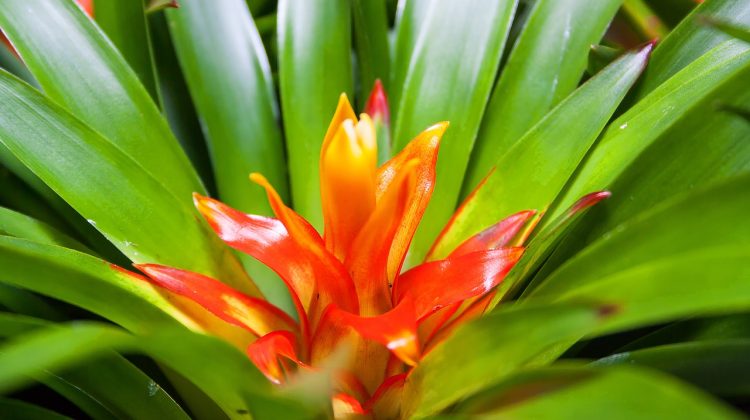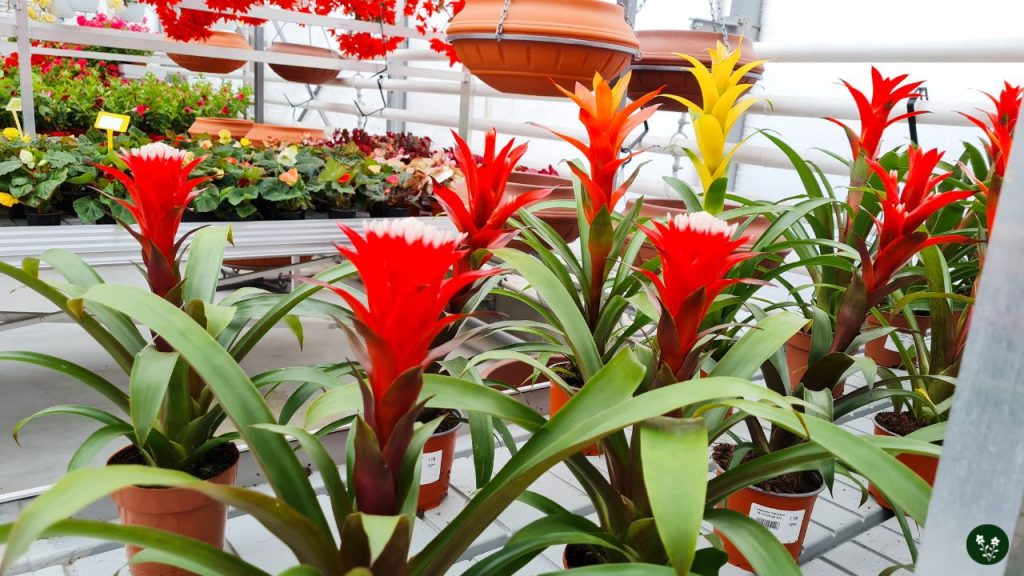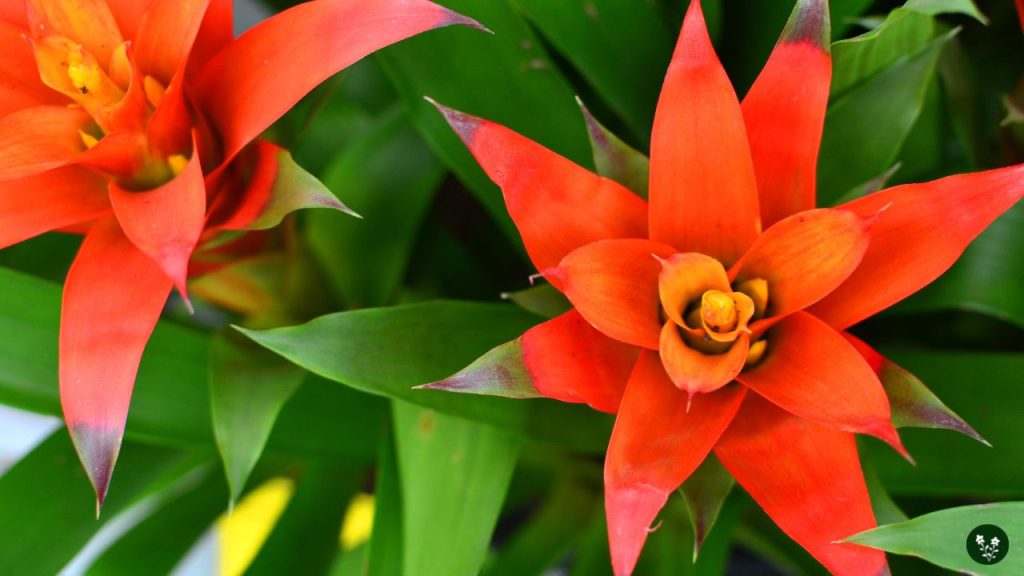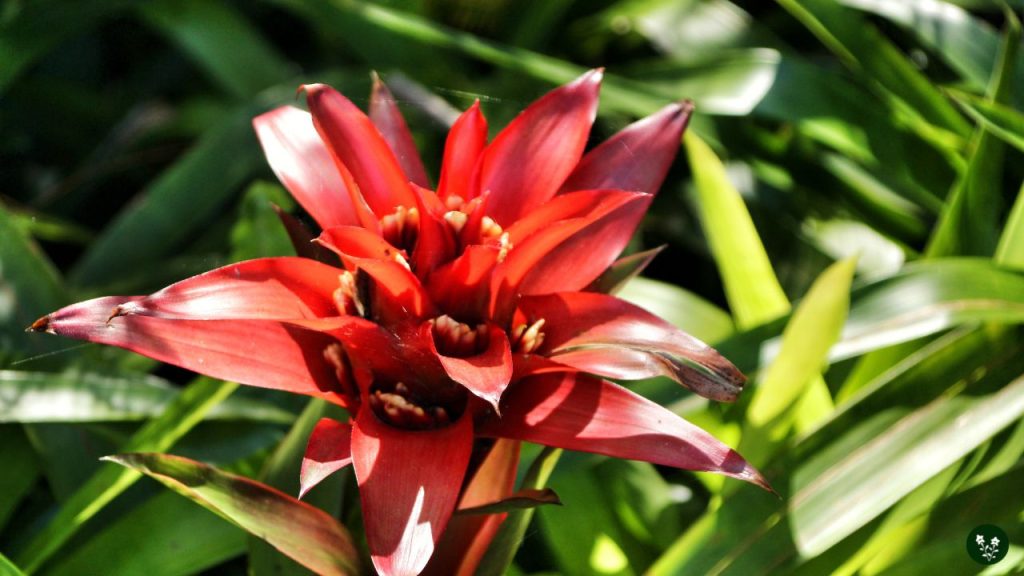
Guzmania plants are a popular choice for indoor gardening enthusiasts due to their unique and colorful appearance.
These bromeliads are easy to care for and can thrive in a variety of environments, making them a great option for both novice and experienced gardeners alike.
When it comes to Guzmania plant care, there are a few key factors to keep in mind.
These plants prefer bright, indirect light and should be watered regularly, with water being placed in the central cup of the plant and replaced frequently to prevent rot.
Additionally, Guzmania plants thrive in warm, humid environments and should be kept in soil that drains well.
Whether you’re looking to add some greenery to your home or office, or simply want to expand your indoor gardening repertoire, Guzmania plants are a great choice.
With proper care and attention, these unique and striking plants can thrive for years to come.
In this article, we'll cover
1. Ideal Growing Conditions

Preferred Light Conditions For Guzmania
Guzmanias prefer bright, indirect light but can tolerate lower light than many other bromeliads. Direct sunlight can damage the leaves and cause them to turn yellow or brown.
A good location for Guzmania would be near a window that gets bright but filtered light, or under artificial light with a full spectrum bulb.
Guzmania Temperature Requirements
Guzmania grows best at moderate warmth. A steady temperature of at least 55℉ (13℃) or higher would be ideal for the plant’s growth.
Temperatures below 50℉ (10℃) can damage the plant. High temperatures above 90℉ (32℃) can cause the leaves to curl and dry out.
Soil and Potting Mix
Guzmania is an epiphytic plant, which means that it grows on trees and absorbs nutrients and moisture from the air. Therefore, it does not require soil to grow.
Instead, it can be grown in a potting mix made of bark, perlite, and peat moss. The potting mix should be well-draining and allow air to circulate around the roots.
A good potting mix for Guzmania would be one that is specifically designed for bromeliads.
It is important to note that Guzmania does not like to be overwatered. The potting mix should be kept moist but not wet. Watering once a week is usually sufficient.
It is also recommended to water the plant from the top, allowing the water to run through the leaves and into the central cup. This will help to prevent the buildup of stagnant water in the central cup, which can lead to rot.
2. Watering and Fertilizing Guzmania Plants

Frequency of Watering
Guzmania plants require a consistent level of moisture, but overwatering can lead to root rot. It is recommended to water the plant when the top inch of soil becomes dry.
Pour water into the central cup of the plant and make sure to replace it frequently to prevent rotting. Always use distilled or filtered water, as tap water can contain minerals, chlorine, and fluoride that can harm the plant.
During the growing season, which is typically spring and summer, keep the potting mix moist but not waterlogged.
Fertilizer Recommendations
Guzmania plants benefit from regular fertilization during their growing season. A balanced fertilizer with an NPK ratio of 20-20-20 is recommended, applied once every two weeks.
It is important to follow the manufacturer’s instructions for the correct amount of fertilizer to use. Avoid fertilizing during the plant’s dormant period, which is typically in the fall and winter.
Another option for fertilizing guzmania plants is to use a slow-release fertilizer. These fertilizers release nutrients gradually over time, reducing the risk of over-fertilization.
Follow the manufacturer’s instructions for the correct amount and frequency of application.
It is important to note that guzmania plants are sensitive to high levels of salt, which can build up in the potting mix over time. To prevent salt buildup, flush the potting mix with distilled or filtered water every few months.
3. Pruning and Propagating Guzmania Plants

Pruning Guzmania
Pruning Guzmania is an essential part of caring for these plants. If the flower starts to turn brown or fade, it is time to start this process. To prune Guzmania, follow these steps:
- Use a sharp, sterile pair of scissors or pruning shears.
- Cut the stem of the flower as close to the base as possible.
- Remove any dead or damaged leaves from the plant.
- Trim the tips of the leaves to maintain the plant’s shape.
Propagation Techniques
Guzmania plants are relatively easy to propagate, and there are several techniques you can use to grow new plants:
Propagation by Pups
Once the plant has flowered, it will begin to produce offsets called pups. These can be removed from the mother plant and potted individually. To propagate Guzmania by pups, follow these steps:
- Wait until the pup is at least 1/3 the size of the mother plant.
- Use a sharp, sterile pair of scissors or pruning shears to cut the pup away from the mother plant.
- Plant the pup in a pot with well-draining soil.
- Keep the soil moist, but not waterlogged.
Propagation by Seeds
Guzmania can also be propagated by seeds, but this is a more time-consuming process. To propagate Guzmania by seeds, follow these steps:
- Collect the seeds from the mother plant once the flower has faded.
- Clean the seeds and remove any debris.
- Plant the seeds in a pot with well-draining soil.
- Keep the soil moist, but not waterlogged.
- Place the pot in a warm, humid location.
- Germination can take several weeks to several months.
4. Common Guzmania Plant Problems and Solutions

Pests and Diseases
Guzmanias are generally hardy and disease-resistant plants. However, they can be susceptible to a few pests and diseases. Here are a few common problems and solutions:
- Spider Mites: These tiny pests can cause yellowing and browning of leaves, as well as webbing on the plant. To get rid of spider mites, spray the plant with a mixture of water and dish soap, or use neem oil.
- Mealybugs: Mealybugs are small, white, cottony insects that can cause stunted growth and yellowing of leaves. To get rid of mealybugs, wipe the leaves with a cotton swab dipped in rubbing alcohol, or use neem oil.
- Root Rot: Overwatering can cause root rot, which can lead to wilting and yellowing of leaves. To prevent root rot, make sure the soil is well-draining and allow the top inch of soil to dry out before watering.
Why Is My Guzmania Turning Yellow?
Yellowing of leaves can be a sign of several problems, including:
- Overwatering: Overwatering can cause root rot, which can lead to yellowing and wilting of leaves. Make sure the soil is well-draining and allow the top inch of soil to dry out before watering.
- Underwatering: Underwatering can also cause yellowing of leaves. Make sure the plant is getting enough water, and mist the leaves occasionally to increase humidity.
- Lack of Light: Guzmanias prefer bright, indirect light. If the plant is not getting enough light, it may start to yellow. Move the plant to a brighter location.
- Age: As Guzmanias age, the lower leaves may start to yellow and die off. This is normal and not a cause for concern.
Conclusion
Guzmania plants are beautiful, low-maintenance plants that can add a touch of tropical flair to any home or office. With their vibrant colors and unique shape, they are sure to catch the eye of anyone who walks by.
When it comes to caring for Guzmania plants, there are a few key things to keep in mind. First and foremost, they need plenty of bright, indirect light to thrive.
They also require regular watering, but be sure not to overwater them as this can lead to root rot.
Another important aspect of Guzmania plant care is ensuring that they are planted in well-draining soil. This will help prevent water from pooling around the roots and causing damage to the plant.
Overall, Guzmania plants are a great choice for anyone looking for a low-maintenance, yet stunning plant to add to their collection. With a little bit of care and attention, they will continue to brighten up your space for years to come.
Leave a Reply